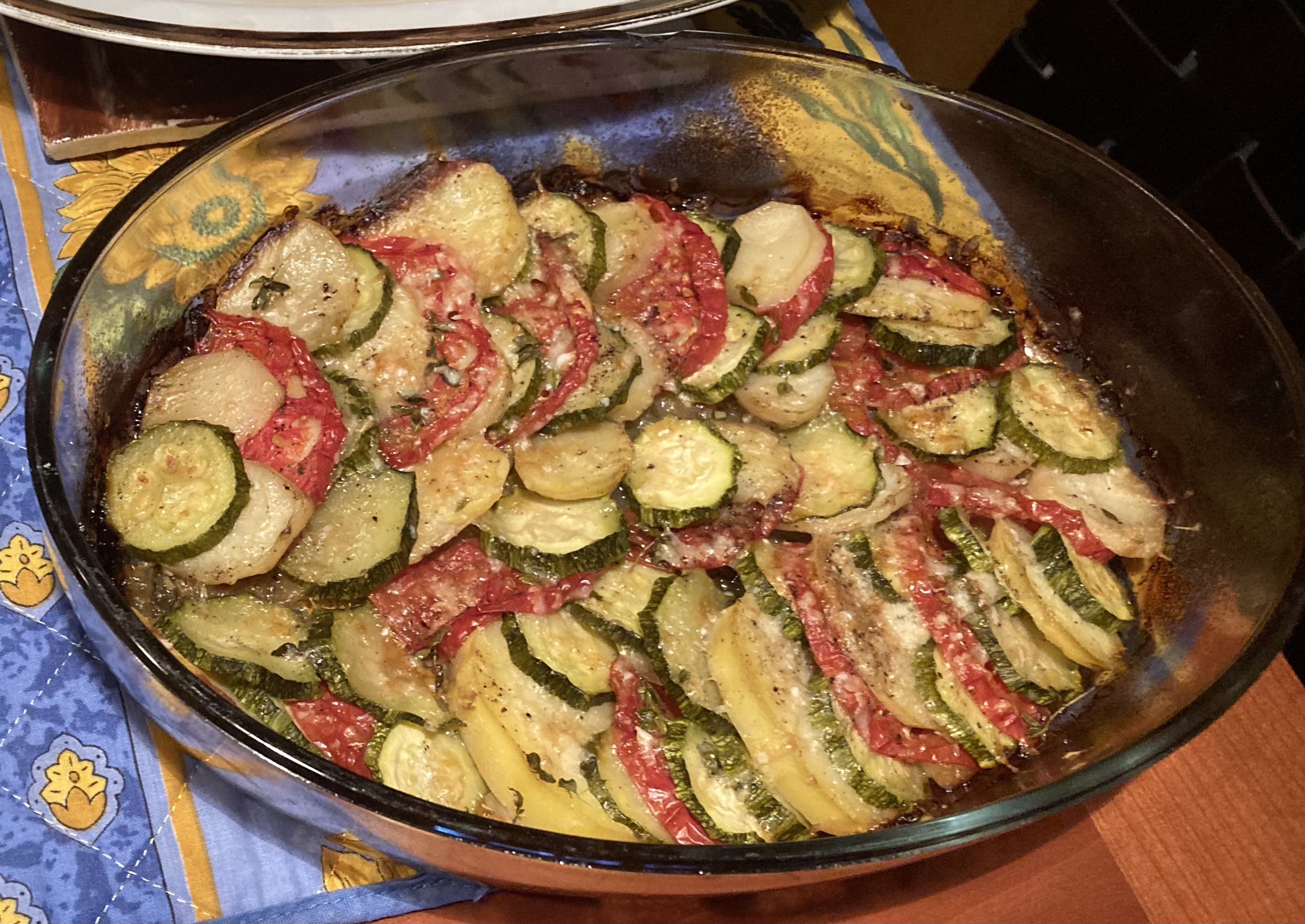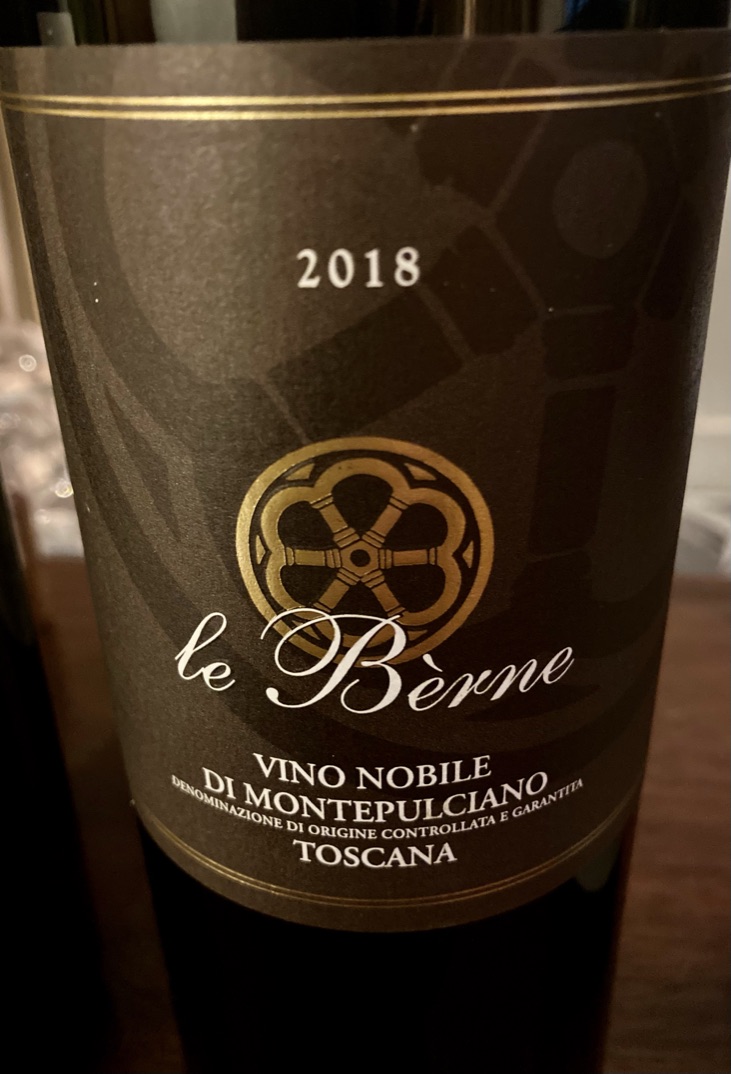Tom Maresca and Diane Darrow are two of our favorite dinner guests. The conversation always revolves around food, wine travel and the many wonderful experiences we have had together. Hopefully we will all be together in Rome in October.
We started our dinner last wee as usual with Champagne:
 Champagne Krug NV Grand Cuvée 168EEM Edition made from 45/55% Pinot Noir, 15/20 Pinot Meunier and 25/35 Chardonnay–the percentage depends upon the vintage. They blend about 120 wines from 10 or more different vintages and it is aged for at least 6 years in the cellars. All of their Champagnes are aged in used small oak barrels. They are all prestige cuvees made from Grand Cru and Premier Cru villages and are aged longer before release. The overall rating for the vineyards is 98% with Krug’s own vineyards rating 100%. This is a Champagne with hints of dried citrus fruit, gingerbread, hazelnuts and almonds, a note of honey and a touch of brioche. It has a very long finish and a memorable aftertaste. Fantastic. Michele’s favorite Champagne.
Champagne Krug NV Grand Cuvée 168EEM Edition made from 45/55% Pinot Noir, 15/20 Pinot Meunier and 25/35 Chardonnay–the percentage depends upon the vintage. They blend about 120 wines from 10 or more different vintages and it is aged for at least 6 years in the cellars. All of their Champagnes are aged in used small oak barrels. They are all prestige cuvees made from Grand Cru and Premier Cru villages and are aged longer before release. The overall rating for the vineyards is 98% with Krug’s own vineyards rating 100%. This is a Champagne with hints of dried citrus fruit, gingerbread, hazelnuts and almonds, a note of honey and a touch of brioche. It has a very long finish and a memorable aftertaste. Fantastic. Michele’s favorite Champagne.
With the Champagne we had roasted cremini mushrooms stuffed with goat cheese and rosemary, a new appetizer in Michele’s repertoire, that I unfortunately forgot to photograph. But I am sure she will make it again soon.

Erbaluce di Caluso “Kin” 2015 Tappero Merlo made from 100% Erbaluce. Erbaluce is a white grape and the vines are either pergola (know as topia locally) or guyot-trained. The clusters are usually wing shaped and the grapes are small to medium with thick skins. When fully ripe they take on an auburn color as if they were sun dried. Erbaluce can be vinified as a still wine, a classic method sparkling wine, or as a passito. Erba means grass and Luce means light.
Caluso is an ancient Celtic village on the top of a hill where you can look across the plain and see Turin. The vines were planted in 2004 and the vineyard is at 295 meters. There are 4,500 to 5,000 plants per hectare and the pruning system is guyot. The vineyard is entirely organic. Manual harvest takes place at the end of September.
Fermentation is with native yeasts in stainless steel tanks at a controlled temperature. The wine matures for at least 18 months on the lees in 20hl barrels with weekly battonage. Then it remains in the bottle for another 3 years. The wine has hints of sage, citrus, white flowers and herbs with balsamic and spicy scents. This is a wine that can age and I waited five years before I opened as it is not a complete wine until after 5 years/ according to the producer Domenico Tappero Merol but it could last for 10 to 20 years. The wine was showing very well
 Linguine with Crab and Fresh Cherry Tomato Sauce ready to serve
Linguine with Crab and Fresh Cherry Tomato Sauce ready to serve
 On the plate
On the plate
 Vino Nobile di Montepulciano Riserva 1999 made from large Sangiovese grapes (aka Prugnolo Gentile.) The age of the vines ranges from 15 to 25 years. The running system is guyot. Only natural fertilizer is used and treatments performed on the vines are only copper and sulphur based. The grapes are hand harvested and carefully selected and placed in dry ice. Carbonic maceration is performed with dry ice for two or three days. The pied de cuve (process of using wild yeast from the vineyard to ferment the wine) is prepared 3 to 4 days before using the best grapes at 4 degrees alcohol for preventing aciculate yeasts from hindering proper fermentation. Fermentation is from 15 to 30- 35 days depending on the quality of the pomace. During maceration the cap is broken by mechanical means. The wine is aged in barriques and 15hl barrels with weekly lees stirring. The wine ages for 18 to 20 months. Then it is transferred to large barrels. Wood aging is for about 40 months and the wine is bottled after it is filtered with propylene cartridges using a mobile system. The wine has hints of ripe berries, cranberries, cherry, clove and a touch of iris. It was drinking very well.
Vino Nobile di Montepulciano Riserva 1999 made from large Sangiovese grapes (aka Prugnolo Gentile.) The age of the vines ranges from 15 to 25 years. The running system is guyot. Only natural fertilizer is used and treatments performed on the vines are only copper and sulphur based. The grapes are hand harvested and carefully selected and placed in dry ice. Carbonic maceration is performed with dry ice for two or three days. The pied de cuve (process of using wild yeast from the vineyard to ferment the wine) is prepared 3 to 4 days before using the best grapes at 4 degrees alcohol for preventing aciculate yeasts from hindering proper fermentation. Fermentation is from 15 to 30- 35 days depending on the quality of the pomace. During maceration the cap is broken by mechanical means. The wine is aged in barriques and 15hl barrels with weekly lees stirring. The wine ages for 18 to 20 months. Then it is transferred to large barrels. Wood aging is for about 40 months and the wine is bottled after it is filtered with propylene cartridges using a mobile system. The wine has hints of ripe berries, cranberries, cherry, clove and a touch of iris. It was drinking very well.
 Our main course was Pork, Rosa di Parma style. This was a roast loin of pork rolled around a filling of Parmigiano-Reggiano and Prosciutto.
Our main course was Pork, Rosa di Parma style. This was a roast loin of pork rolled around a filling of Parmigiano-Reggiano and Prosciutto.
 To go with the pork, Michele made a Tian of Summer Vegetables.
To go with the pork, Michele made a Tian of Summer Vegetables.
 On the plate
On the plate
 Brunello di Montalcino Riserva 2004 “Vigna Pianrosso” Ciacci Piccolomini d’Aragona made from 100% Sangiovese from 11.69 hectares named Pianrosso at 240 and 360 meters with a soil of medium grain with good levels of marl dating to the Eocene period. Fermentation is in stainless steel and glass concrete vats with temperature controlled via cooling plates and jackets. Aging is in 7.5 -30 Slavonian oak barrels, for 3 years followed by over 12 months of bottle aging before release. This is an intense, complex and full bodied wine wine with hints of red berries and spice.
Brunello di Montalcino Riserva 2004 “Vigna Pianrosso” Ciacci Piccolomini d’Aragona made from 100% Sangiovese from 11.69 hectares named Pianrosso at 240 and 360 meters with a soil of medium grain with good levels of marl dating to the Eocene period. Fermentation is in stainless steel and glass concrete vats with temperature controlled via cooling plates and jackets. Aging is in 7.5 -30 Slavonian oak barrels, for 3 years followed by over 12 months of bottle aging before release. This is an intense, complex and full bodied wine wine with hints of red berries and spice.
 Dessert
Dessert
Because I love blueberry desserts, Michele made one of my favorites, a Blueberry Pudding Cake.







 Salchetto “Nobile” 2018 made from 100% Prugnolo Gentile on 15 ha. Each plant makes one bottle. Manual harvest, sulfite free vinification with native yeasts takes place.
Salchetto “Nobile” 2018 made from 100% Prugnolo Gentile on 15 ha. Each plant makes one bottle. Manual harvest, sulfite free vinification with native yeasts takes place.











































